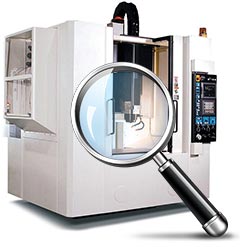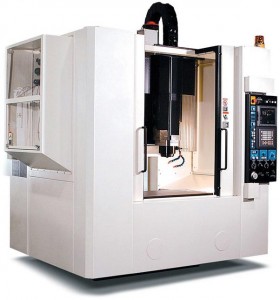
CE Marking of Machinery
So, you want to send machines to Europe, for retail or manufacturing there. You know you’ll need CE Marking, but you don’t know where to start. And this may seem like a dumb question, but are you sure that the thing you’re thinking of is actually ‘a machine’, according to the European definitions?
You could be surprised at what is and isn’t ‘a machine’. For example, a manual pallet moving truck is a machine, but an automobile isn’t. While it has thousands of moving parts, it is not actually required to be CE certified.
Determining what is and isn’t a machine, and whether or not it needs CE marking, is the first thing we’ll do for you.
Our CE Marking of Machinery process
-
1Determine that it is actually a machine
The first step is simply to make sure that the ‘machine’ in question actually meets the technical European definition of a machine. The Machinery Directive gives four clear definitions:
-
Definition 1 – ‘An assembly fitted with or intended to be fitted with a drive system other than directly applied manual or animal effort, consisting of linked parts or components, at least one of which moves, and which are joined together for a specific application’.
-
Definition 2 – ‘An assembly of machines and/or partly completed machinery which, in order to achieve the same end are arranged and controlled to function as an integral whole’.
-
Definition 3 – ‘Lifting apparatus whose only power source is directly applied manual effort’.
-
Definition 4 – ‘Interchangeable equipment is a device which, after placing into service of machinery or tractor, is assembled with that machinery or tractor by the operator himself in order to change its function’.

-
-
2Determine if the machine actually needs CE Marking
The next question we need to ask is whether or not the machinery need to be CE Marked. Again, the Machinery Directive is very specific about this, and says CE Marking is needed in four different situations:
- Where the manufacturer of relevant machinery himself puts that machinery into service or places it for sale within the EU. This essentially means that if a machine is put into use in a manufacturing plant or put on sale in the market within Europe then it must be CE Marked. This means that in the vast majority of cases, a machine coming to Europe for the first time will need to be CE Marked. The only exception would be if the machine is not yet going to be actually used or sold.
- Where having imported machinery from a country or territory outside the EU, puts that machinery into service. This is essentially the same thing as above, with the only difference being that somebody else has brought the machine to Europe on your behalf.
- If you are creating a complex assembly by interlinking a series of existing machines, you are in effect creating something new. This basically means that if you are joining two or more machines to work together, you need new CE Marking to show that the combination is compliant, even if all those machines were already individually CE Marked themselves.
- If you are altering the function or performance of a machine or complex assembly, you are again creating something new and must ensure that the Directive is complied with.
Similar to above, if you want to use the same machinery to achieve a different result, the new process must be CE Marked too.
-
3Determine the applicable Directives and specific requirements
A machine can easily have a number of different Directives applicable to it as well as number of European Standards. Take the example of machining centre on attached image:
At least three different Directives would apply to this machine:
-
The Machinery Directive 2006/42/EC
-
The Low Voltage Directive 2014/35/EC
-
The EMC Directive 2004/108/EC
A number of European and International Standards would also apply to this machine, such as:
-
EN 12417: 2001 – Machine Tools, Safety, Machine Centres
-
EN 60204-1: 2006 – Safety of Machinery – Electrical Equipment of Machines
-
ISO 13857: 2008 – Safety of machinery – Safety distances to prevent hazard zones being reached by upper and lower limbs

Once we establish that a machine needs to be CE Marked, we then identify all the relevant Directives and Standards that apply to that machine.
-
-
4Conduct the assessment of the machinery
Once we identify the applicable Directives and Standards, we then assess the machine against these requirements. This assessment includes a Risk Assessment process, and can require some testing too.
-
5Compile the Technical Files and Instruction Booklet
On completion of the assessment, we put together a technical file. The Directives are very specific about what needs to be included in these technical files and they are usually quite large and complex in nature.
Generally, a Technical File will include the following elements:
- Declaration of Conformity
- General Description of product
- Determination of Limits
- Risk Assessments (based on requirements of CE Directives)
- Technical Information (required from client)
- Mechanical Assembly drawings
- Electrical diagrams
- Safety markings
- Design components
- Technical testing reports and certifications (where necessary)
Another major requirement for CE Marking of machinery is that the manufacturer produces a User & Service Manual for the Machine. Most people usually refer to this document as the Instruction Booklet.
This is an area where many manufactures get it wrong when CE marking a machine, but we will make sure you get it right.
Firstly, the instructions must specifically include references to the following:
-
Declaration of Conformity
-
General Usage
-
General Machine Safety
-
Potential Hazards, including Do’s and Dont’s
-
Maintenance of Machinery
-
Key Components Part List
As well as this, the instructions must be in the official language of the country where the machine is being placed or sold. Remember that in Europe, there are many different languages!
-
6Put the CE Mark on the machine
Finally – what you’ve been waiting for. When we complete all of the above, we can place the CE mark on the machine and issue the Declaration of Conformity. The machine can now properly be used and/or sold in Europe.
